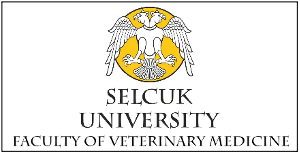| 2015, Cilt 31, Sayı 1, Sayfa(lar) 027-032 |
| [ Türkçe Özet ] [ PDF ] [ Benzer Makaleler ] |
| Methicillin resistant Staphylococcus aureus (MRSA) colonization at clinics of a Faculty of Veterinary Medicine |
| Dilek Öztürk1, Hülya Türütoğlu1, Özlem Şahan2 |
| 1Department of Microbiology, Faculty of Veterinary Medicine, Mehmet Akif Ersoy University, Burdur, Turkey 2Department of Microbiology, Faculty of Veterinary Medicine, Ankara University, Ankara, Turkey |
| Keywords: Colonization, MRSA, Staphylococcus aureus, veterinary clinics |
| Downloaded:1395 - Viewed: 2448 |
|
Aim: Methicillin resistant Staphylococcus aureus (MRSA) is an
important zoonotic agent causing difficulties in treatment of the
infections in human and veterinary medicine, due to multiple
antibiotic resistances. In this study, the colonization of MRSA
was investigated by the swabbing samples from the skin and nasal
mucosa of veterinarians, personnel and students and from
the environment at clinics of a Faculty of Veterinary Medicine.
Materials and Methods: For this purpose, samples were obtained from 16 veterinarians, 2 clinic personnel and 17 students that each was sampled 4 times and from 41 different environmental surfaces thought to be common sites of hand contact. Results: Out of 118 S. aureus isolates, 75 (63.6%; 34 veterinarians, 8 personnel, 24 students and 9 environmental surfaces) were found phenotypically resistant to methicillin by a disk diffusion test. All samples taking from two personnel were colonized with phenotypic resistant S. aureus, while the 14 veterinarians and 7 students sampled were carried the phenotypic resistant S. aureus at least to one of samples. Although 24 (20.3%) S. aureus isolated from veterinarians (13 isolates), personnel (1 isolate) and students (10 isolates) were determined to be positive for mecA gene encoded resistance to methicillin, mecA-positive isolates can not be isolated from environmental surfaces at clinics. Conclusions: It has been determined that MRSA colonization has high in working people and students at the clinic, thus standard sanitation measures, particularly personnel hygiene, are required because of the risk of transmission between humans and animals. |
| [ Türkçe Özet ] [ PDF ] [ Benzer Makaleler ] |




